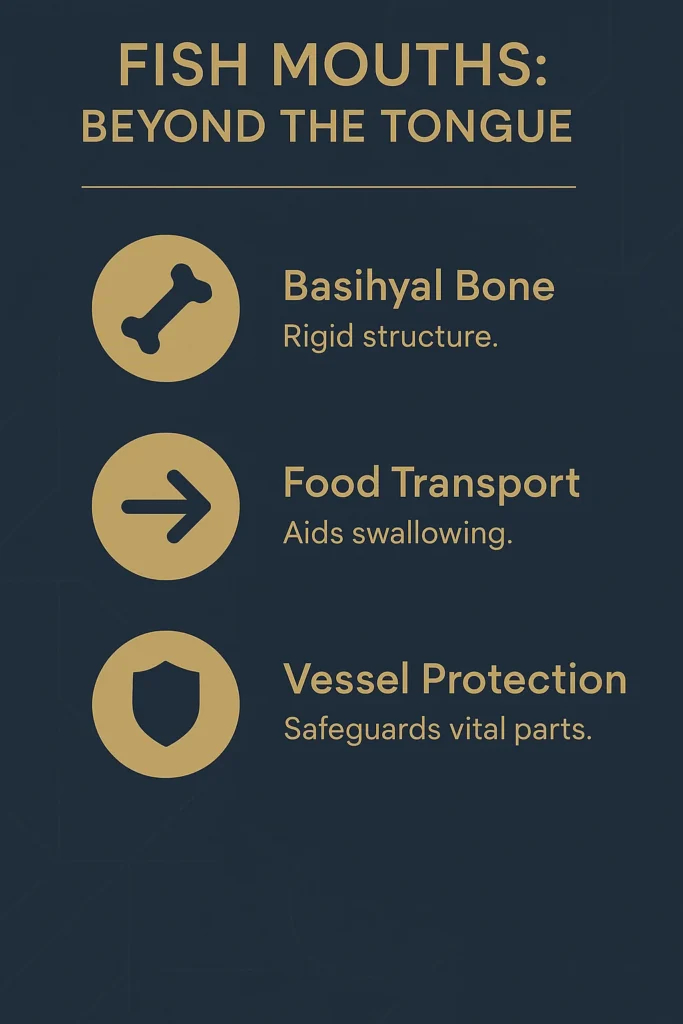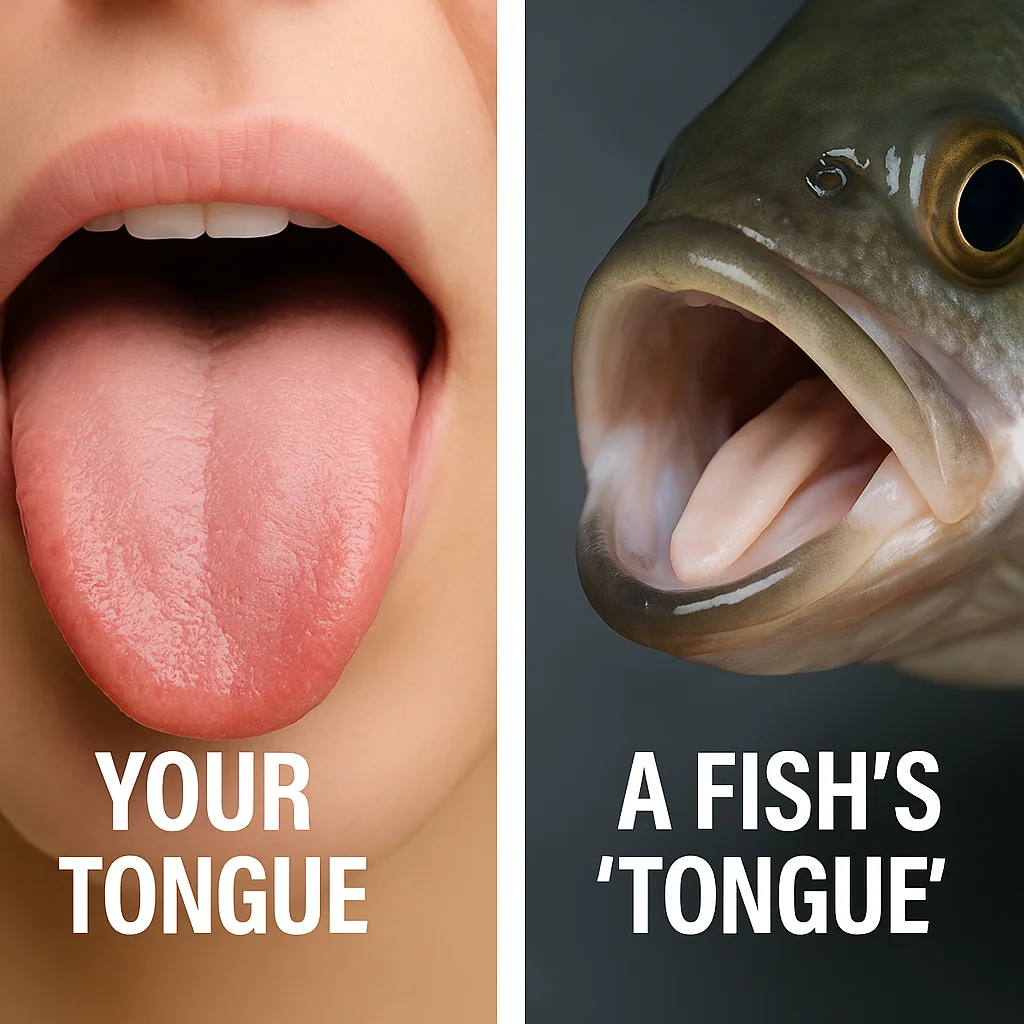Fish do not have tongues like humans. Instead, they have bony structures that help them eat and protect important parts of their bodies.
In a Nutshell: Do Fish Have Tongues?
- You will learn how fish mouths work differently from ours.
- You will understand the main jobs of a fish’s “tongue.”
- You will discover how some fish adapt their feeding.
Estimated reading time: 4 minutes
Have you ever wondered how a fish eats without a tongue like yours? It’s a common question. Fish have unique ways to handle food, showing amazing adaptations to their watery homes.
What is a Fish’s “Tongue”?
Fish do not have a soft, muscular tongue like you do. Their “tongue” is mostly a bony part called the basihyal. It sits on the floor of their mouth. This bone is part of the fish’s skeleton. It does not have taste buds. It also cannot move around like a human tongue.

Some fish, like the lamprey, have a special tongue-like part. This part can stick out of their mouth. It has sharp, horny teeth to scrape food. But most fish cannot stick out their tongue.
How Fish Use Their Mouth Parts
The basihyal does not taste food. Its main job is to protect a key blood vessel, the ventral aorta. This vessel runs near the mouth. The basihyal keeps it safe from big, wiggling food.
Some fish have tiny teeth on their “tongues.” Salmon are one example. These teeth help push food to other jaws inside their mouth. These extra jaws then grind the food.
For some fish, like the Asian carp, another structure helps with eating. It is called the palatal organ. This organ is on the roof of their mouth. It helps them move food around and eat well.
- Not like yours: Fish tongues are bony, not soft and muscular like human tongues.
- Food helpers: They help move food, not taste it or chew it.
- Bodyguards: Some “tongues” protect important blood vessels in the mouth.
- Parasite risk: Tiny creatures can attach to and harm a fish’s tongue.
How Fish Tongues Evolved
The way fish tongues developed depends on how they eat and where they live. For example, some fish, like those in the Glossanodon family, have “tongue teeth.” These teeth help them hold onto prey. This shows how fish have changed over time to use tongue-like parts for survival.

Fish tongues evolved differently from mammal tongues. Mammals use their tongues to move food for chewing. Fish use their tongues to push food backward. They often use other jaw parts to help. You can learn more about how fish chew and process food from research at Brown University.
When Fish Tongues Face Trouble
Some tiny parasites can harm a fish’s tongue. These are called tongue biters. They are a type of crustacean. They attach to the base of a fish’s tongue. Over time, this can make the tongue fall off or shrink. These parasites feed on the fish’s blood or slime. They do not eat the fish’s food.
New Discoveries About Fish Tongues
Scientists are still learning about fish tongues. They study their parts, how they work, and how they changed over time. For example, Dr. Luz Patricia Hernandez studies the palatal organ in carp and minnows.
She looks at how it helps them eat and adapt. You can find more details on fish anatomy and function at the Australian Museum.
Fish Tongue Fact Check
1. Fish tongues are muscular and flexible like human tongues. ▼
2. The main job of a fish’s “tongue” is to taste food. ▼
3. Some parasites can harm a fish’s tongue. ▼
Conclusion
Fish have structures similar to tongues, but they are very different from human tongues. These bony parts help fish eat and protect themselves. They show how fish have adapted to their diverse water homes. Understanding these differences helps us appreciate the amazing world of fish.

